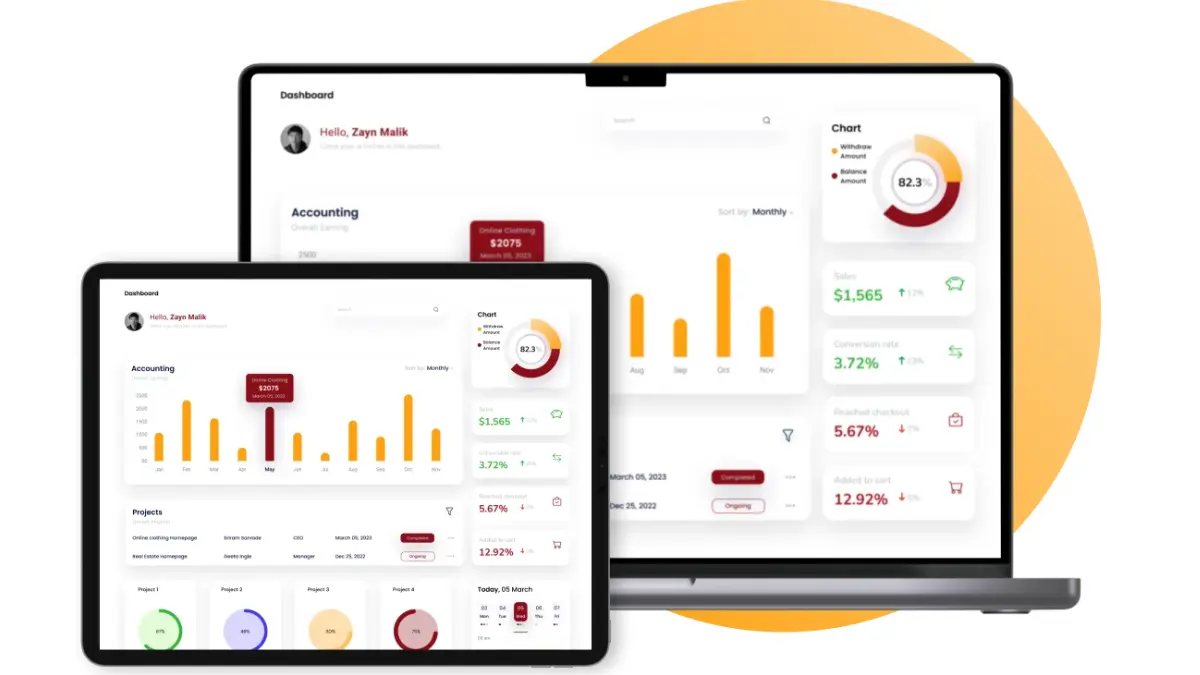In today’s fast-paced business landscape, I’ve seen how effective inventory management can determine a company’s success. Managing buffer inventory isn’t always easy, as overstocking wastes resources while stockouts hurt customer trust and sales.
That’s why I focus on maintaining the right buffer stock strategy to stay resilient amid changing market demands. In fact, studies show that optimizing buffer levels can cut excess inventory by up to 30% while improving service quality.
If you’re ready to streamline your inventory operations, explore how modern inventory management software can transform your approach. Book a free demo today and see how the right tools can strengthen your supply chain.

Key Takeaways
|
What is Buffer Inventory?
Buffer inventory is a large supply of commodities that are bought and stored when there is an excess and sold when there is a shortage to control their price and quantity in the economy. These inventories allow operations to run smoothly despite sudden spikes in demand or delays in supply.
Maintaining a buffer stock through inventory management software helps me prevent stockouts that could lead to lost sales and unhappy customers. By keeping extra inventory on hand, I can respond more flexibly to sudden changes in demand or supplier delays.
The Differences Between Buffer Inventory vs. Safety Stock

From my experience, buffer inventory acts as a broader safeguard that protects against supply chain disruptions like supplier delays or production issues. Safety stock, on the other hand, is something I maintain specifically to handle sudden spikes in customer demand.
Additionally, buffer inventory is typically larger and more flexible, allowing businesses to handle multiple uncertainties at once. In contrast, safety stock is calculated based on demand variability, focusing on short-term shortages rather than overall operational risks.
Why You Need to Keep Buffer Inventory

Maintaining buffer inventory is crucial for keeping my supply chain resilient and operations efficient. By holding a strategic amount of stock, I can navigate uncertainties more effectively and enhance overall business performance.
Here are the key reasons why you need to keep buffer inventory:
1. Prevents stockouts
Maintaining buffer stock allows your business to continue fulfilling orders despite supply chain disruptions or sudden demand surges. This inventory buffer ensures smooth operations and minimizes costly delays, preventing stockouts that could otherwise halt production.
2. Improves customer satisfaction
Out-of-stock items can frustrate customers and push them toward competitors. By having an adequate buffer level of inventory, you can consistently meet customer needs, which builds loyalty and encourages repeat business, improving your long-term customer relationships.
3. Maximizes sales opportunities
With the right buffer inventory formula, you can fulfill unexpected spikes in demand and capture every sales opportunity. This approach helps your business reach its full revenue potential while ensuring products are always available.
4. Navigating unexpected disruptions
Buffer stock safeguards during disruptions like natural disasters, port congestion, or supplier issues. A reliable buffer inventory level allows you to continue meeting customer demand, even when external factors cause delays.
Now that you know why your business needs to pay attention to inventory buffer you might have considered software solutions that streamline inventory management. To find the right solution, you can click the banner below.
How to Calculate Buffer Inventory Levels

Calculating my buffer inventory levels is essential to maintaining the right stock to meet demand without overstocking. I use several proven methods that consider different variables to determine the optimal amount of buffer stock for my business.
Here’s how you can calculate it effectively:
- Safety stock calculation: The safety stock method helps determine a buffer inventory level by factoring in average daily usage and lead time. The formula for safety stock is:
Safety Stock=(Maximum Daily Usage×Maximum Lead Time)−(Average Daily Usage×Average Lead Time)
For example, if your maximum daily usage is 200 units, your maximum lead time is 10 days, your average daily usage is 150 units, and your average lead time is 5 days, the calculation would be:
Safety Stock=(200×10)−(150×5)=2000−750=1250 units
- Hezier and render’s method: This approach is ideal for businesses experiencing fluctuating lead times. The formula is:
Buffer Stock = Z × σLτ
Here, represents the desired service level, and is the standard deviation of lead times. This method allows businesses to account for variability and provide a more accurate buffer stock.
- Greasley’s method: Greasley’s method combines average demand with lead time variability:
Buffer Stock σLT × Average Demand x Z
This approach helps businesses manage demand and lead times inconsistencies, ensuring adequate stock levels without excess inventory.
- Historical demand-based buffer stock: Historical demand data is a practical way to forecast future buffer levels. By analyzing past sales trends and SKU performance, you can adjust your buffer inventory level to accurately meet anticipated demand, optimize storage, and reduce costs.
Using historical demand data is a practical way to forecast future buffer levels. Analyze past sales trends and SKU performance to adjust your buffer stock in inventory management accordingly. This data-driven approach optimizes storage and reduces costs while meeting anticipated demand.
Strategies Recommendation for Buffer Inventory Levels
When it comes to extra inventory management, I often face unique challenges due to limited financial and storage capacity in each line of business. Here are some strategies I’ve found helpful:
-
Give top priority to buffer inventory for essential or best-selling items:
Prioritize your extra inventory efforts on your best-selling items or those that are necessary for your company’s operations. Even if you are unable to keep a large buffer stock throughout your whole product line, you will still have enough stock to meet client demand if you prioritize these products.
-
Establish relationships with important suppliers for flexible reordering terms:
Establish flexible reordering terms, including lower minimum order amounts or more frequent replenishment cycles, in close collaboration with your main suppliers. Because of this flexibility, you can developing a solid rapport with your suppliers enables you to negotiate better terms and increase the effectiveness of your inventory control.
-
Study innovative storage options:
If you have a limited amount of storage space, think of innovative ways to make the most of it. By adding mezzanines, you may enhance your storage space without taking up more space. To handle seasonal variations in demand or to store excess product during busy times, you may also consider renting off-site storage facilities.
Tips on Optimizing Buffer Inventory Levels

Optimizing my buffer inventory levels is essential to keeping my supply chain efficient and resilient. By applying the right strategies, I can balance costs and performance while maintaining consistent product availability.
- Prioritize buffer stock for best-selling or critical items: Focus on maintaining buffer stock for high-demand or essential products to prevent costly stockouts and keep your supply chain running smoothly during spikes in demand.
- Negotiate flexible reordering terms with key suppliers: Collaborate with suppliers for quick restocking to adjust buffer levels as market conditions shift.
- Gain access to near-term demand forecasts: Leverage accurate demand forecasts to optimize buffer inventory and maintain ideal stock levels with minimal excess or shortages.
- Implement a dynamic tool for real-time buffer management: Use a cloud-based inventory system that automatically adjusts buffer levels in real time to align stock with market demand.
- Utilize data insights to refine inventory strategies: Analyze historical data to fine-tune buffer inventory levels and maintain optimal stock through data-driven forecasting.
- Choose tools that deliver faster ROI: Invest in fast-ROI tools that streamline inventory processes, making buffer stock management more efficient and cost-effective.
Effortlessly Manage Buffer Inventory Levels with HashMicro’s Inventory Solution

HashMicro’s Inventory Management Software has been one of the most effective tools I’ve used to manage buffer inventory levels efficiently. Its user-friendly interface and robust features help me maintain optimal stock while keeping costs under control.
If you’re interested in seeing how this system can benefit your operations, I recommend signing up for a free demo from HashMicro. It’s a great way to explore the features firsthand and understand how they can streamline your inventory management process.
HashMicro provides several features to enhance inventory management, such as:
- RFID Warehouse Rack Stock Automation: Implementing RFID technology streamlines tracking and generates real-time item movement reports, keeping extra inventory levels accurate and up to date.
- Stock Forecasting: Advanced stock forecasting algorithms predict future needs from trends, ensuring optimal buffer levels and minimizing stockouts or overstocking.
- Run Rate Reordering Rules: Set automatic reorder points based on consumption patterns to keep buffer stock sufficient and streamline replenishment.
- Fast-Moving and Slow-Moving Stock Analysis: Analyze inventory turnover rates to optimize extra stock, keeping fast-moving items available and minimizing excess for slow sellers.
- Quality Control Management: Integrate quality control with AI for supply chain to ensure buffer stock meets standards and maintains customer satisfaction.
- Stock Optimizer per Warehouse: Optimize stock levels per warehouse to align buffer inventory with each location’s unique operational demands.
- Integrated Barcode & QR Code System: Integrate barcode and QR code scanning to automate tracking, reduce errors, and maintain accurate buffer stock levels.
- Stock Aging Report: Use a stock aging report to monitor item age, manage buffer stock efficiently, and minimize waste.
“Maintaining an optimal buffer inventory is not about overstocking; it’s about strategic balance. With solutions like HashMicro’s Inventory Management System, businesses can forecast demand accurately, minimize risks, and keep operations running smoothly even during supply disruptions.”
— Angela Tan, Regional Manager
Conclusion
Buffer inventory is a key strategy that helps businesses strengthen supply chain resilience. It involves keeping extra stock to handle demand changes and supply disruptions. Buffer stock refers to this additional inventory, which prevents stockouts and keeps operations running smoothly during unexpected situations.
One effective solution I use for managing buffer inventory is HashMicro’s Inventory Management System, which provides comprehensive features to optimize stock levels and boost efficiency. By leveraging this software, I can easily monitor inventory and make informed decisions to minimize risks.
If you’re interested in experiencing the benefits firsthand, we invite you to try our free demo today. Discover how HashMicro can transform inventory management and bolster supply chain resilience!
FAQ About Buffer Inventory
-
What is Buffer Stock?
Buffer stock refers to extra stock kept on hand in case of manufacturing delays or an unexpected increase in demand.
-
What is the difference between buffer inventory and safety stock?
Buffer stock is the extra stock kept to handle sudden demand increases, such as promotions or sales spikes. Safety stock, meanwhile, protects against issues like supplier delays or production interruptions. Both help maintain smooth operations during unexpected disruptions.
-
What is the advantage of buffer inventory?
Buffer stock, sometimes called buffer stock or safety stock, provides a cushion against supply chain disruptions or sudden demand increases. By keeping extra stock on hand, businesses can continue to meet customer needs despite unexpected challenges or delays, maintaining service quality and avoiding shortages.
-
What factors affect buffer inventory?
The amount of buffer stock needed is influenced by seasonal trends and demand variability. By studying historical data and market trends, businesses can adjust buffer levels to maintain enough stock during peak seasons. This approach also helps prevent overstocking in slower periods.














